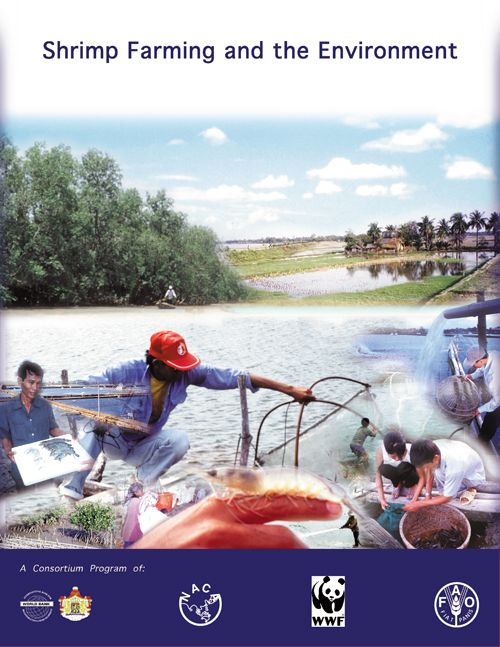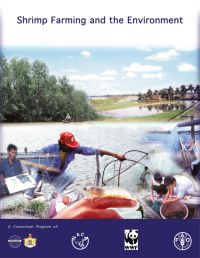Shrimp Farming and the Environment (article prepared for InterCoast #39)
20 November 2003 | Michael Phillips, Jason Clay, Ronald Zweig, Carl Gustav Lundin and Rohana Subasinghe | 825 Downloads | .doc | 39 KB | Better management practices, Shrimp, Environment and Sustainability
The article was prepared for publication in InterCoast Issue #39, Cross Portfolio Learning for Enhancing Integrated Coastal Management. In recent years, aquaculture has become an increasingly important economic activity in coastal areas of many countries in the world. It offers one of the few viable opportunities for poverty alleviation, community development and food security in coastal regions of many countries in the tropical developing world. The development of coastal aquaculture has certainly not been without its controversies though and shrimp aquaculture in particular has generated considerable debate in recent years over its social and environmental costs and benefits. Rapid expansion of shrimp farming in some countries in Latin America and Asia has focussed attention on the need for effective management strategies. Such strategies should tap the potential of the sector for economic growth and poverty alleviation, whilst controlling the negative environmental and social impacts that can accompany poorly planned and regulated development.
Recognising that challenges for better management of shrimp aquaculture around the world are complex, and that improved practices often result from identifying and analysing lessons learned and exchanging such information, a consortium programme entitled “Shrimp Farming and the Environment” has been developed. The partners are the World Bank, the Network of Aquaculture Centres in Asia Pacific (NACA), the World Wildlife Fund (WWF) and the Food and Agriculture Organization of the United Nations (FAO). The program comprises over 35 complimentary case studies prepared by more than 100 researchers in more than 20 shrimp farming countries. Cases range from specific interventions within single operations to thematic reviews of key issues in shrimp aquaculture. The goal of the cases is to document and analyse experience around the world in order to better understand what works, what doesn't and why.
The program is based on the recommendations of the World Bank review on shrimp aquaculture and the environment (1998), a 1999 NACA/WWF meeting in Bangkok, Thailand on shrimp management practices, and an FAO Bangkok technical consultation on policies for sustainable shrimp aquaculture (12/1997). There are six main objectives this cooperative program:
- Generate a better understanding of key issues involved in sustainable shrimp aquaculture.
- Encourage a debate and discussion around these issues that leads to consensus among stakeholders regarding key issues.
- Identify better management strategies for sustainable shrimp aquaculture.
- Evaluate the cost for adoption of such strategies as well as other potential barriers to their adoption.
- Create a framework to review and evaluate successes and failures in sustainable shrimp aquaculture which can inform policy debate on management strategies for sustainable shrimp aquaculture. and
- Identify future development activities and assistance required for the implementation of improved management strategies that would support the development of a more sustainable shrimp culture industry.
The consortium is giving special attention to poverty and equity issues, and the work will provide an assessment of the use of shrimp farming development/investments as a means of alleviating poverty through targeted development interventions in coastal areas.
Copyright, all rights reserved.

